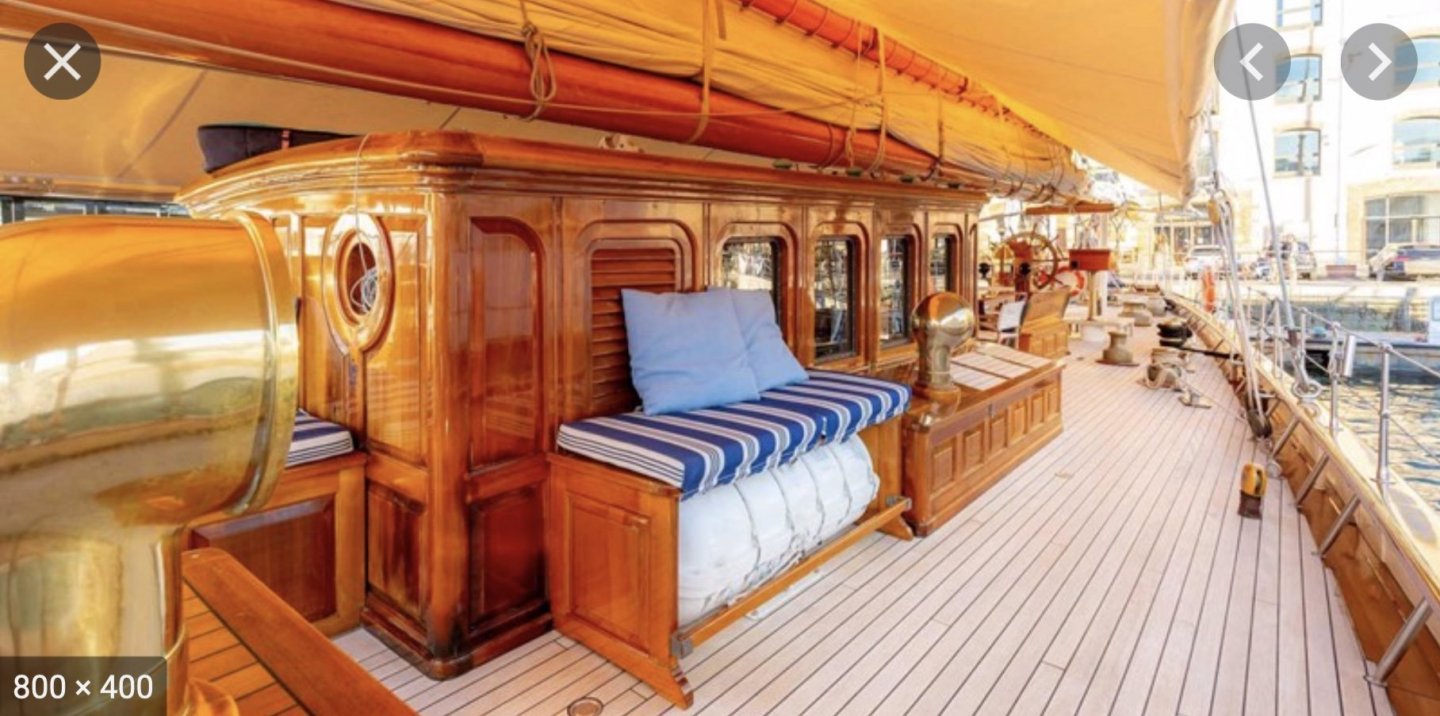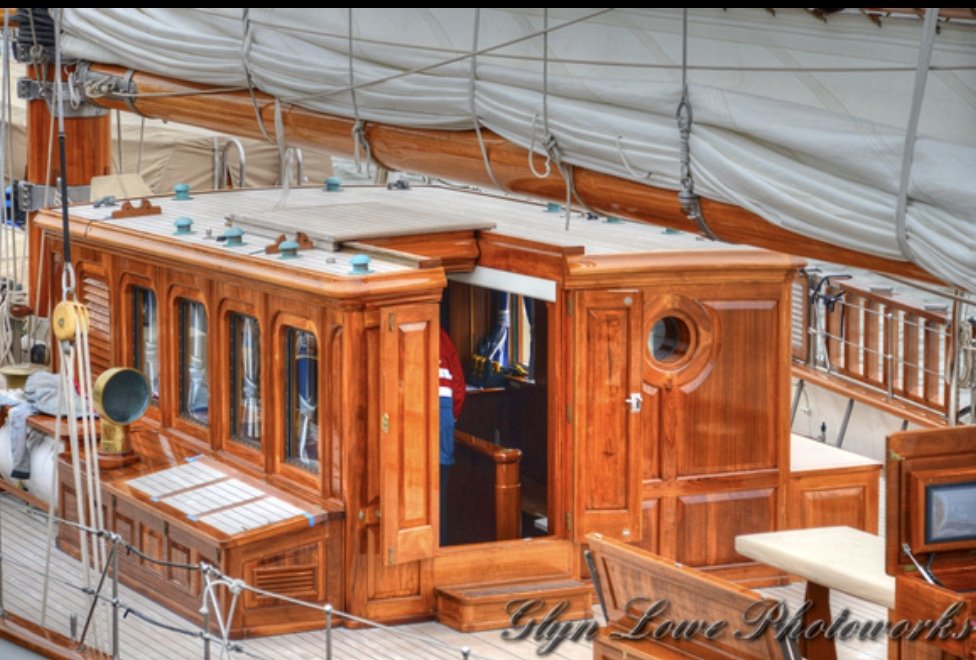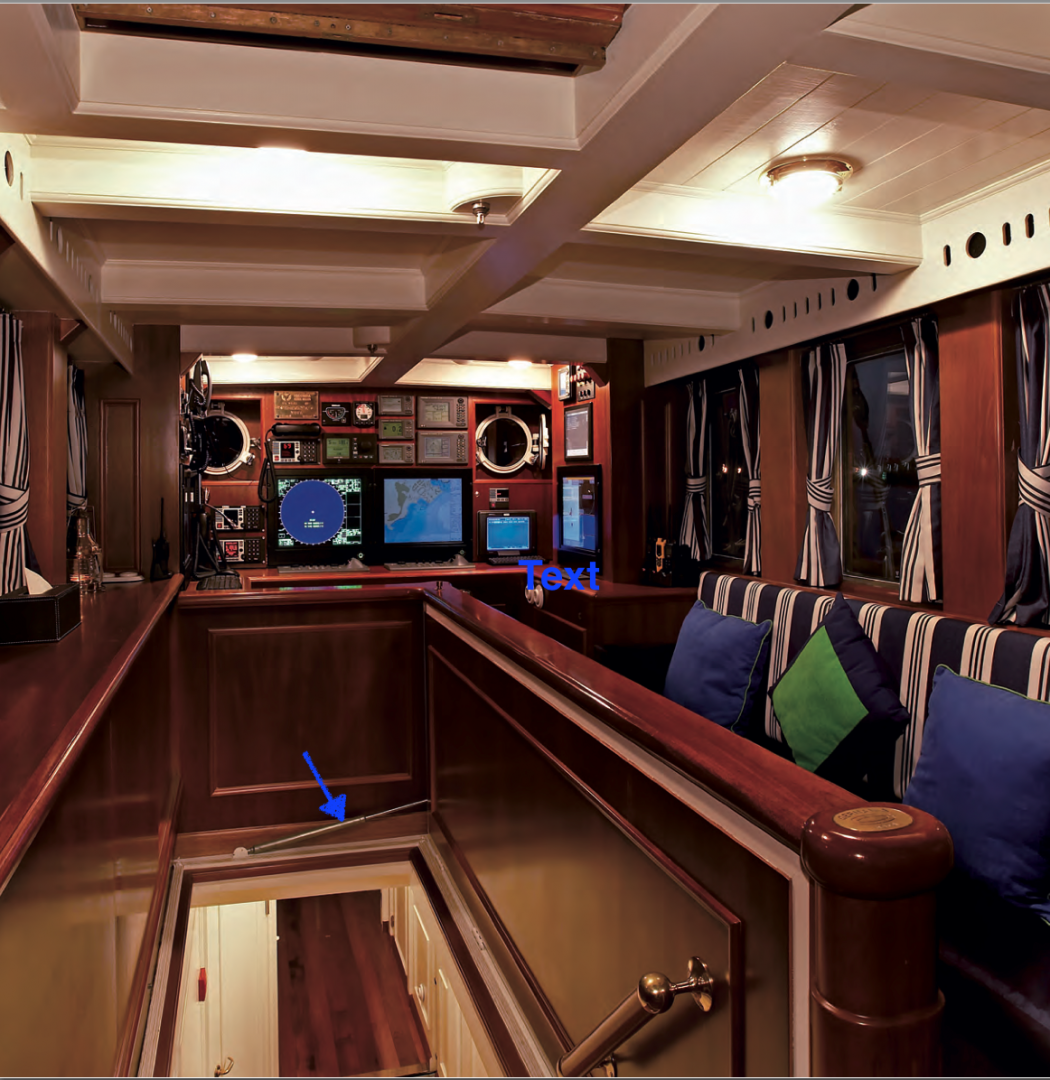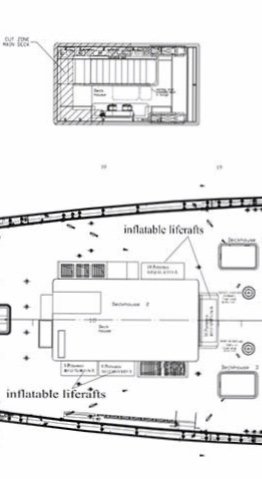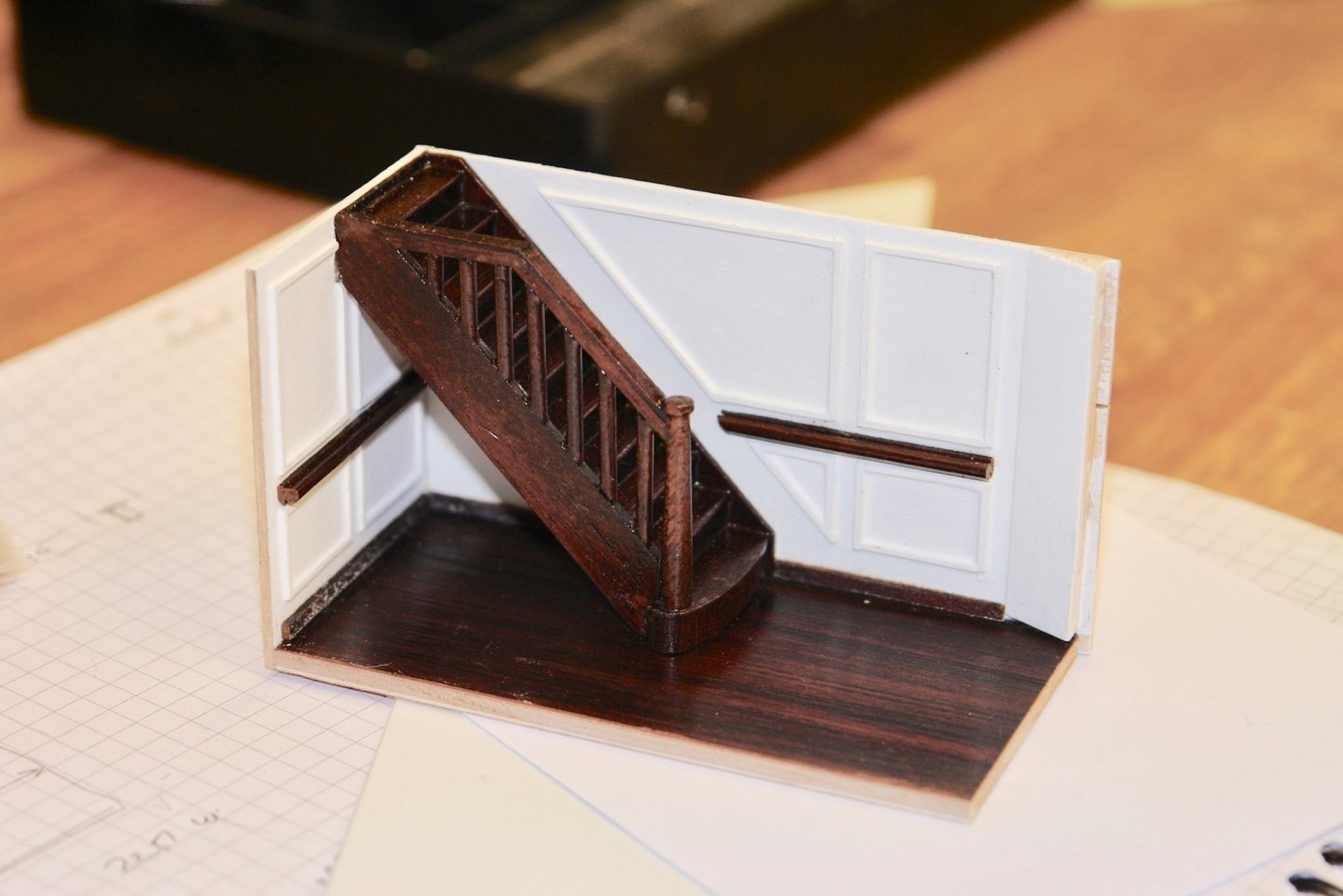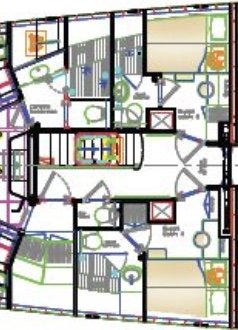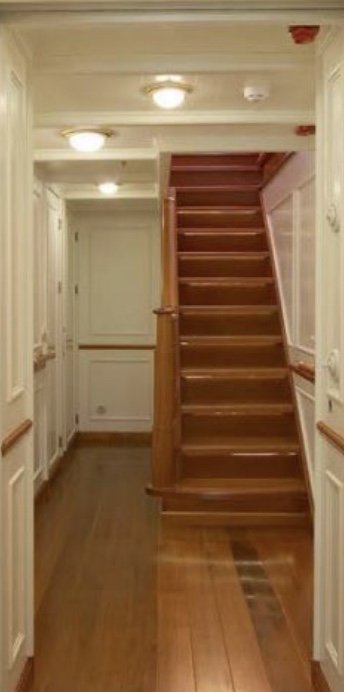-
Posts
3,946 -
Joined
-
Last visited
Content Type
Profiles
Forums
Gallery
Events
Everything posted by KeithAug
-
She also has 3 radio phones:- 1 - Ship to ship / ship to shore, 2 - Direct share dealing line, 3 - Direct private line to mistress.
-
Richard / Keith - you set such high expectations I fear I may disappoint. Steve - excessive if you ask me. 4 large computer screens plus a smaller laptop size screen. I can't even begin to think what they are all for. GPS, Radar, Internet - and after that I run out of ideas.
-
Pat, Roger, Michael, Gary thank you for your comments. I am moving on to the deck cabin. I have a selection of reasonable photos and a plan lacking in detail. A few decisions to make though as follows:- In the next 2 photos the side wings are of interest. On this the port side view the top of the wing is seen to be planked. Whereas on the starboard side view the wing top has skylights protected by brass bars. The plans while being a little indistinct seem to show skylights. It is also apparent that the life rafts are sometimes hidden neatly under seats. And sometimes not. I am going with the skylight version (in sympathy with previous deckhouses) and with the life rafts hidden under seats. I also have some decent interior shots which I hope to put to good use. The cabin has very limited space around the instruments and seating, the whole interior being compromised by the dominant stair well and solid banister. However looks can be deceptive. The clue I think lies in the gas strut highlighted with a blue arrow in the next shot. I am fairly sure that this strut is to control the closure of the right hand bannister which folds down to close the stair well and create an extended floor. I have stated by drawing up the internal plan and noting on it the heights of the various desktops etc. I have started building up the interior but will cover that in my next post.
-
Very educational Hellmuht, I continue to be fascinated.
- 158 replies
-
- byblos ship
- Egyptian
-
(and 1 more)
Tagged with:
-
Druexy - yes I will have to leave clues, Eberhard - The advent calendar is first - then the dolls house. Keith - Not yet, the final job before I finish.
-
Summer distractions are impeding progress, the new mower was delivered so I had to play with that, the balcony railing needed a coat of paint and other small jobs needed attending to. At least that is my excuse. Below deck work continued. The walls were made from 1/16" ply and the door detail and architrave was cut from 1/32" ply. The panelling edge strips were cut as .025" square strips on the Byrnes saw before being glued in place. The top left panel in the next photo has had a coat of primer. The paint was enamel and I kept it thin to avoid brush marks - it took 6 coats. I then made the hand rail and skirting board from mahogany and gave them a coat of Poly before attaching them. The door knobs were turned from brass. The walls adjacent to the stairs were then attached to the mahogany planked floor and the stairs were glued in place. Then the two remaining walls were then installed. The assembly was then slotted into the well in the deck and a couple of poor photos taken. Finally the cabin floor was put in place hiding virtually everything. So all in all a somewhat pointless week.
-
Eberhard - it was the gun calibre that prompted the question and the knowledge that large naval guns could cause quite a lot of structural damage to the ship when fired. My sympathies lie with the gun crew.
-
Martin - she does have elegant lines and quite a narrow beam - obviously built for speed.
-
Pat / Richard I won't glue the deckhouse down as it fits tightly in the well in the deck, however this is only a partial benefit as the main boom will sit above it and sheeting the boom down will prevent it being lifted out. Removal will be possible by releasing the boom sheets but not something I will want to do ofter. Thank you for your kind comments. Good points but somewhat time limited. My plan is to tell the Granddaughter and leave it to her in my will.
-
Eberhard The gun carriage looks excellent in its barbette. But I have a question, where did the gun crew shelter when the gun fired. I'm guessing the muzzle blast would have been quite uncomfortable if they sheltered in the barbette but I can't see any other obvious options?
-
I am now setting off on a flight of fancy - building the below deck corridor that no one will ever see. The problem is I have detail which I am finding it impossible to ignore. I have a plan view of the area together with a good photo. The key feature of the area is the staircase so I started with that. It is 2.2" high and has a tread depth of .2". I cut the steps on the mill from a piece of pine and then clad the pine. Sides were made and drilled to tale the spindles. You can just about see the holes in the next photo. I cut the stairs off the block I had used for machining the steps and then milled the back of the stairs flat. I then clad the back of the stairs with mahogany planks (an exceptionally silly step because it is impossible to see this area even without the deck house in place). I then turned the bottom stair post and made the .060" spindles using a draw plate. The spindles were drilled either end to take the wire mounting spigots and the spindles were cut to length and installed together with the handrail. I then made a start on the corridor floor and walls. While I was at it I also made the floor for the deckhouse.
-
Great job on the frames, I thought the lack of restraint during fabrication might have resulted in distortion but clearly you pulled it off. Well Done.
- 58 replies
-
Yes but occasionally you have to sail in a different direction. I find the best way to find something is to make it again. It invariably turns up immediately I finish.
-
Keith Clock?????? It predates clocks - but it does have a sundial. My estimated run hour is 330 so you may be lucky soon.
About us
Modelshipworld - Advancing Ship Modeling through Research
SSL Secured
Your security is important for us so this Website is SSL-Secured
NRG Mailing Address
Nautical Research Guild
237 South Lincoln Street
Westmont IL, 60559-1917
Model Ship World ® and the MSW logo are Registered Trademarks, and belong to the Nautical Research Guild (United States Patent and Trademark Office: No. 6,929,264 & No. 6,929,274, registered Dec. 20, 2022)
Helpful Links
About the NRG
If you enjoy building ship models that are historically accurate as well as beautiful, then The Nautical Research Guild (NRG) is just right for you.
The Guild is a non-profit educational organization whose mission is to “Advance Ship Modeling Through Research”. We provide support to our members in their efforts to raise the quality of their model ships.
The Nautical Research Guild has published our world-renowned quarterly magazine, The Nautical Research Journal, since 1955. The pages of the Journal are full of articles by accomplished ship modelers who show you how they create those exquisite details on their models, and by maritime historians who show you the correct details to build. The Journal is available in both print and digital editions. Go to the NRG web site (www.thenrg.org) to download a complimentary digital copy of the Journal. The NRG also publishes plan sets, books and compilations of back issues of the Journal and the former Ships in Scale and Model Ship Builder magazines.




